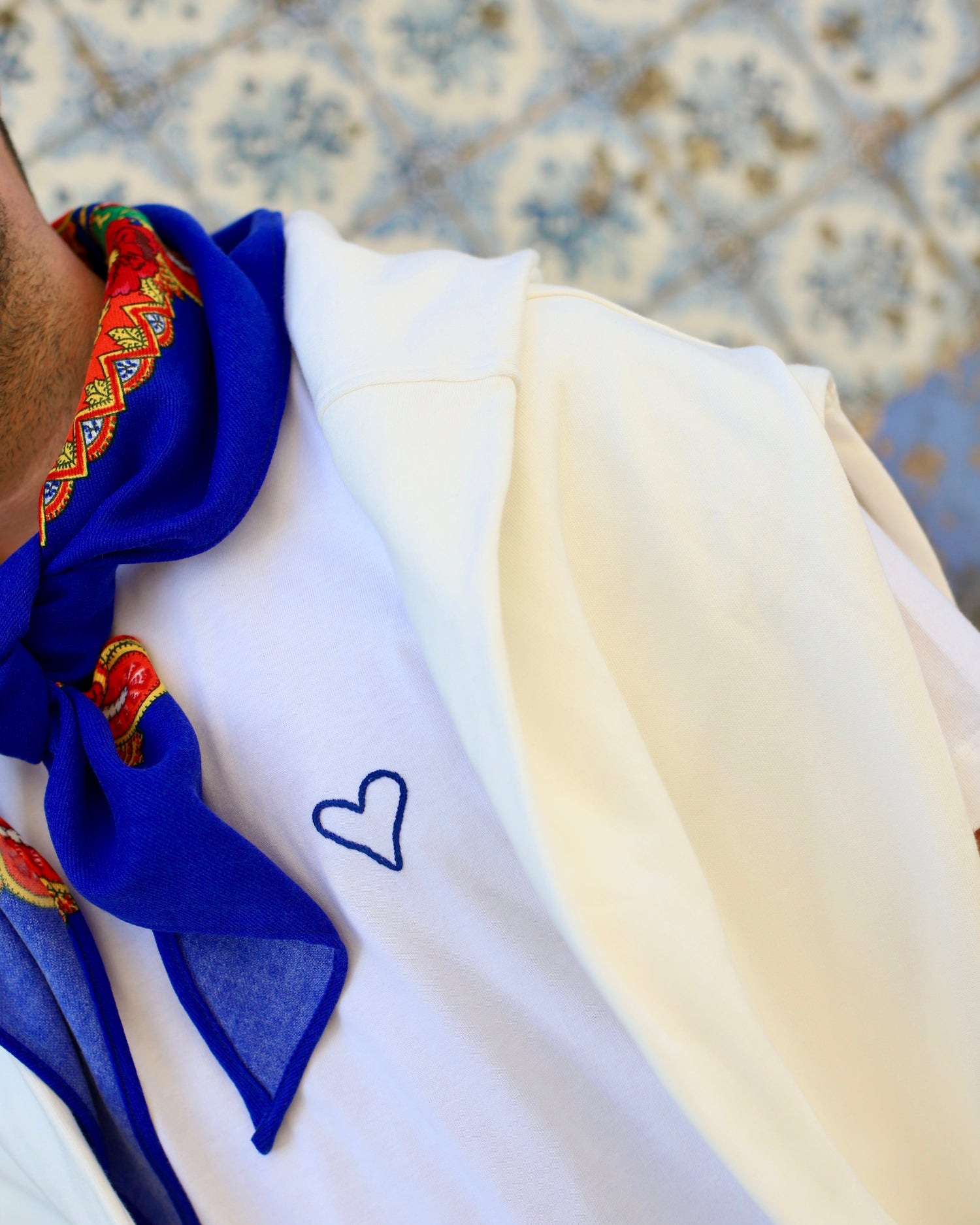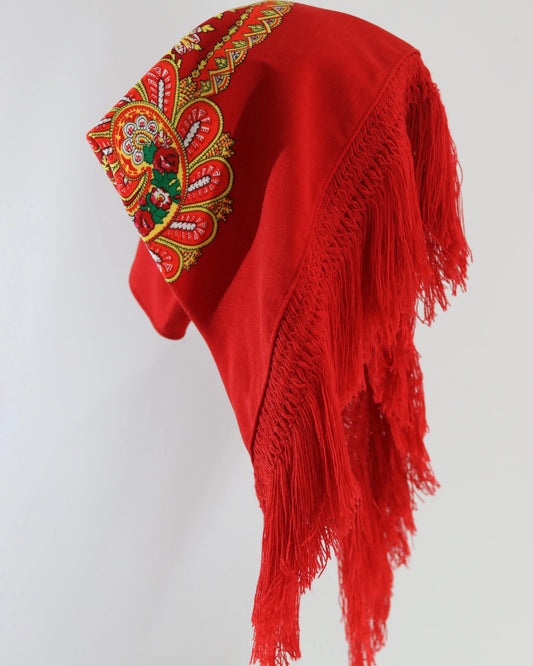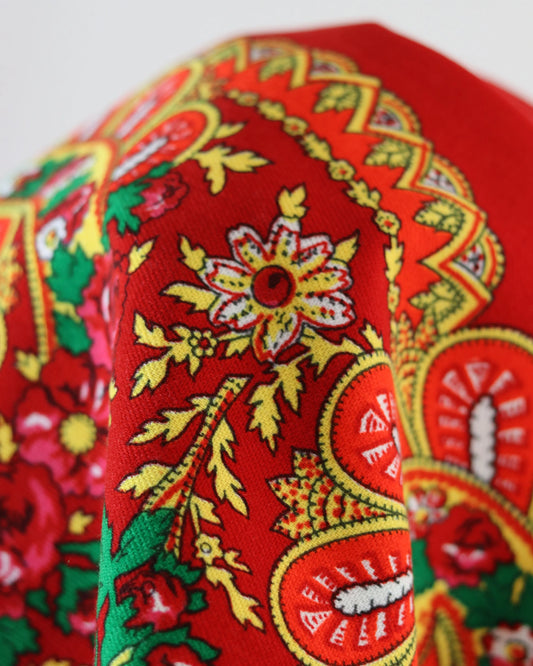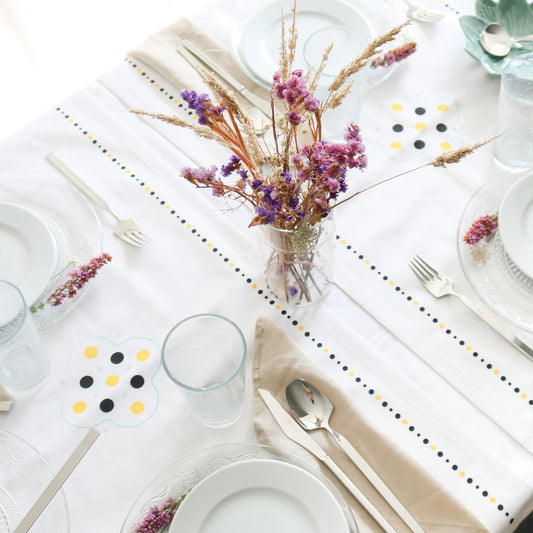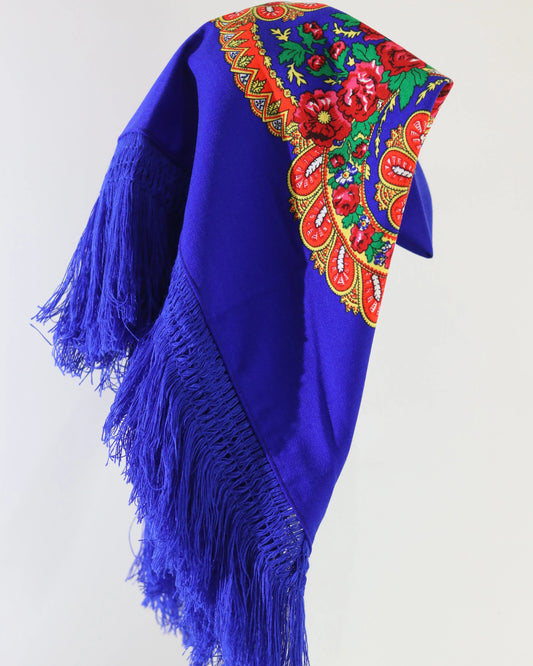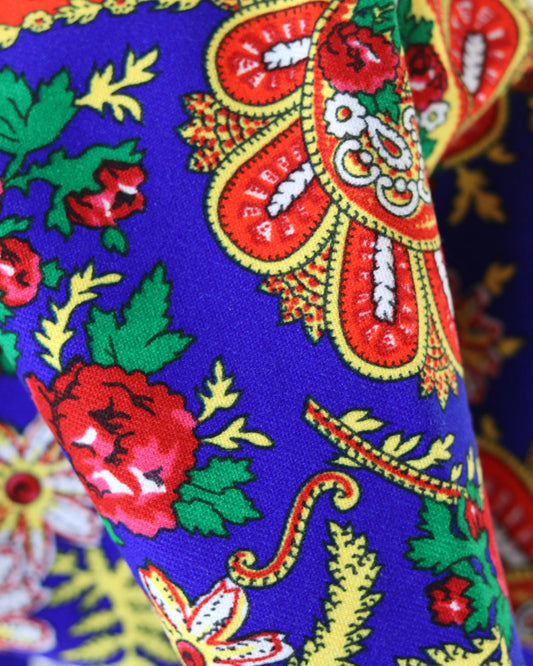Tradition and culture: procession to the sea in Viana do Castelo
August arrives with that northerly wind that freshens the city, and with it a ritual that fills Viana do Castelo with color, sounds, and the sea. The procession to the sea is not just a beautiful moment for photographs. It is a gesture that encapsulates faith, work, and belonging, a celebration that brings together the devotion of fishermen, the pride of those who live by the Atlantic, and the curiosity of those who come from afar to experience a living heritage.
It's one of those days when the city seems to lean toward the Lima River, as if the collective gaze were seeking the same horizon. The estuary transforms into a corridor of adorned boats, flags billowing, sirens echoing. On land, the music of bands, the hum of conversations, and the attention that tense as the sacred image passes by. Those who participate realize this isn't a parade, it's a renewed promise.
Ancient devotion, current form
Viana do Castelo's connection to the sea has never been simple. The bar at the mouth of the Lima, with its elaborate backdrop, has always required skill, luck, and protection. Hence the devotion to Our Lady of Agony, invoked as a protector for those facing the bar and storms. The pilgrimage in her honor grew from the 18th century onward, at the same time that fishing defined rhythms and sociability.
The procession to the sea, as we see it today, was consolidated later, as the city organized itself to make its greatest religious rite a public statement. Taking the image to the pier, placing it on board, and entering the waters of the estuary and the ocean with it is not a spontaneous gesture; it is a gesture matured over generations.
Although the annual calendar is always adjusted to the feast days, the procession takes place in August and brings together fishermen from various backgrounds, families, brotherhoods, and numerous visitors. It's a choreography that combines liturgical rigor with the sparkling joy of a Minho pilgrimage.
A quick look at the evolution
| Era | Main landmark | Context notes |
|---|---|---|
| 18th century | Affirmation of the cult of Our Lady of Agony | Construction of the sanctuary, devotion linked to the crossing of the bar |
| 19th century | Pilgrimage gains popular dimension | Participation of fishing associations and equipment grows |
| 1950s to 1970s | Formalization of the river and sea procession | Decorated boats, siren sounds, increased media coverage |
| Today | Notable event on the August calendar | Coordination with maritime authorities, thousands of participants |
It's not an exhaustive timeline, but it helps to understand what's at stake: tradition that transforms without losing its soul.
The city facing the estuary
Viana do Castelo enjoys a beautiful balance between mountains, river, and ocean. The Lima estuary is wide and open, with banks that invite lingering. The iron bridge, designed by Eiffel, offers a panoramic view and, on procession days, a frieze of people.
The waterfront becomes a stage. The marina, the fishing port, the area near the Santiago da Barra fort, and the neighboring piers are strategic points. There, crews, family members, curious onlookers, and the ceremonial attendees gather.
What's in the air is a sense of sharing. There are those who pray, those who help tie ropes, those who adjust masts with pennants. The boats are adorned with marine tinsel, flowers, nets, flags, and lights, and the names painted on the tack seem to take on a new meaning.
How to organize the day
Preparations begin early, the day before. Each vessel prepares its gear and deck, ensures life jackets and capacity, and coordinates signals and routes. The Viana do Castelo Harbor Master's Office assesses sea and wind conditions, defining limitations and safe windows. If the sea is rough, the procession may remain in the estuary's waters. If the sea is calm, the procession enters the Atlantic and returns safely.
The itinerary repeats a heart: the image leaves the sanctuary, carried by brothers, protected by an honor guard, surrounded by floats, banners, and faithful. Accompanied by a philharmonic band, it continues to the pier. The float then ascends the carefully prepared flagship vessel. At the signal, the first whistle breaks the silence, the others respond, and the devotional fleet is born.
Navigation is done in columns. There are moments when everything slows down for prayers and blessings. At certain points, flowers are thrown into the water, remembering those who never returned from their campaigns. Sirens echo like salvos, and the balance between solemnity and celebration maintains the dignity that the sea demands.
Symbols that repeat and renew themselves
- The image on board, a gesture of shared trust between land and sea.
- The sound of sirens, collective response, warning and greeting.
- The nets, buoys and anchors incorporated into the decorations, the language of the craft.
- The petals on the water, a memory that cannot be erased.
- Pennants and flags, colorful conversation between boats.
Every gesture has layers. Bringing flowers, lighting candles, promising to walk around, contributing to the sanctuary's upkeep—it all flows together. The sea isn't the setting, it's the recipient.
Costume, gold and the beauty of those who participate
In Viana, wearing a costume means embracing a story. The Viana costume comes in a variety of colors, with embroidered aprons, scarves, and full skirts. Gold, worked in filigree, takes center stage, with the Viana heart on the chest, necklaces, earrings, and medals.
The stewardesses, protagonists of another part of the program, also make themselves visible on the day of the procession, adding brilliance and dignity. But here, fashion gives way to ritual. The gaze seeks the float and the water. On the banks, linen shirts, fisherman's caps, and polo shirts of those who came to take photos mingle. The result is a luminous mosaic.
Music, dance and other aspects of the party
The procession has its own tone, slow and devout. Around it, the city pulsates with the rhythm of a pilgrimage. Concertinas, folk groups, giants, and big-headed people wind their way through the streets. Ephemeral carpets appear on stone floors, made of colored salt or flowers, by patient hands during the early hours.
The cuisine is another chapter. It smells of grilled sardines, caldo verde, and rojões (pork stew) with sarrabulho porridge served in trendy taverns. The sea brings octopus, hake, and cod scales with onions. And there's a sweet treat many indulge in guilt-free: the warm "bolinhos de Berlim" (a type of Berliner balls) from Natário bakery, with lines out the door and smiles on everyone's faces.
Security that cannot be improvised
An event in the estuary and at sea requires coordination. Vessel capacity limits are in place, registrations are monitored, and navigation routes are defined. The Maritime Authority, the Port Authority, and fire departments delimit zones, position support vessels, and prepare for any unforeseen events. The Administration of the Ports of Douro, Leixões, and Viana do Castelo coordinates access points and piers.
Those observing on the ground also have simple rules that make a difference: respect barriers, don't obstruct passageways, and follow the crews' instructions. The procession runs more smoothly when the entire city pitches in.
Sustainability, respect for water and air
A beautiful party can also be a responsible party. Many people brought good practices to Viana that have already become commonplace:
- Avoid confetti and plastics that end up in the water.
- Collect the trash that the wind blows away.
- Choosing decorations that leave no trace, flowers and fabrics that come home.
- Use public transport or car sharing, reducing traffic and emissions.
- Moderate noise outside of siren hours so that the elderly and children feel comfortable.
The procession speaks of the future when it takes care of the environment that makes it possible.
Where to see, when to arrive, how to enjoy
The city is welcoming, but August brings crowds. Planning helps.
- Arrive early. An hour before the procession to the pier begins gives you some breathing room.
- Locations with good visibility: the waterfront next to the marina, the Santiago da Barra Fort area, the bridge walkway, and the fishing port pier. Each location offers different views.
- Transportation: The Minho Line train leaves just a stone's throw from the center, and city buses connect to the waterfront. Parking downtown is competitive, but peripheral parking lots are a great way to ease your stress.
- Comfort: practical shoes, water, hat, sunscreen and a piece of clothing for the wind coming down from the hill.
For families with children, it's helpful to identify shaded areas and restrooms. For people with reduced mobility, look for reserved areas near the pier and arrive early.
Etiquette for those who enjoy popular festivals
- The stretcher is not a selfie stick. Photograph with respect, without blocking the stretchers, brothers, and musicians.
- Drones may only be flown with authorization from the maritime authority. Don't risk it.
- Avoid using emergency steps and passages, even when the view is tempting.
- Applaud when it makes sense, keep silence during prayer times.
These small actions protect the beauty of what happens there.
For those who want to take photos without spoiling the experience
The August light is intense, and the reflections on the river are treacherous. A polarizer helps, but it's not essential. Improve your photography with simple choices:
- Move up slightly, one or two rows behind the first row of people, gaining perspective.
- Look for diagonals, masts, cables and pennants create lines that lead the eye.
- Photograph the hands preparing the cables, the gold details, the knots, the flowers, the siren mouths.
- Capture a moment without a camera. Nothing replaces the shared silence when petals touch the water.
The economy that revolves around the pilgrimage
Hotels, restaurants, cafes, and pastry shops are in high demand. Artisans display filigree, embroidery, and ceramics that bring the heart of Viana to their stalls. The revenue helps sustain business during the winter and cements crafts that need new generations.
But Viana has been careful about one thing: growing without becoming distorted. The program seeks to balance tourist demand with respect for schedules, routes, and religious priorities. The centrality of the liturgy and the fishing community remains, remembering that without them, no procession would make sense.
To read the city through the procession
The procession to the sea serves as a key to understanding Viana. In it, we perceive:
- The coexistence of a city that works, prays and welcomes.
- The way the sea dictates caution without spoiling the joy.
- Pride in local symbols, from the heart of Viana to the costumes, including the philharmonic bands.
- The ability to bring generations together, from grandparents who tell stories of storms to children who tell stories of boats.
It is a moving portrait, sincere and intense.
Other processions in Portuguese waters
Portugal has other festivals that take place on the river and the sea, each with its own language. In Vila do Conde, sailors also honor their patron saint near the Ave. In Setúbal, fishing communities participate in rituals dedicated to Our Lady of the Rosary of Troia. In the Ria de Aveiro, some parishes carry statues on moliceiros (fishing boats).
Comparison helps us see singularities. In Viana, the safe entry into the Atlantic carries a special symbolism. The open ocean puts everything into perspective.
What shouldn't be missing in your day
- Arrive early and choose a spot where you can see the float passing by and the boats leaving.
- Eat anything that smells of coal and the sea, or save your appetite for a well-kept octopus.
- Bring a scarf. It can be useful for the sun, the wind, and the emotions.
- Thank you to those who work to make everything work, from the cleaning crews to the support sailors.
Small gestures build lasting memories.
For those who participate in the sea
If you're part of a crew, preparation is key. Engine overhaul, life jackets, fire extinguishers, fire buckets, limited and registered capacity. Route plan reviewed with the Captaincy, clear communication with nearby vessels. And remember that faith and prudence belong on the same deck.
Onboard comfort also matters. Bring plenty of water, hats, sunscreen, and be careful with the heat. Excessive noise from boats can ruin the experience for those traveling alongside, whether on land or on the river. Harmonizing volumes is a sign of respect.
Unmissable agenda for first-time visitors
- Visit the sanctuary while it is still empty, before the main day's activity.
- Observe the decoration of the boats in the fishing port, see the patience of those who untie flags.
- Climb Santa Luzia hill in the late afternoon, to read the outline of the estuary and imagine the route.
- Walking along the shore while the city is still awake, watching the water gain color with the light.
The city reveals itself in layers to those who have time.
Practical questions that always arise
- It rained, will the procession go ahead? The organizers adjust routes and schedules depending on the weather and sea conditions. Safety is paramount.
- Can any boat participate? Registration, inspection, and compliance with the rules are essential. As a rule, local vessels and identified fleets have priority.
- Where is first aid? There are teams on land and in the river, clearly marked. It's worth identifying support points when you arrive.
- Is it possible to attend in a wheelchair? Yes, but it's best to arrive early to secure areas with better visibility and less slope.
Peace of mind comes from simple questions asked in advance.
An invitation that is renewed year after year
The procession to the sea in Viana do Castelo thrives on encounters. Between water and rocks, between faith and work, between those who arrive and those who stay. The rite transforms a little each year, without losing its purpose. There's always room for another pair of attentive eyes, a helping hand, a heart that recognizes itself in that blend of salt, wind, and music.
When the fleet returns and the sirens fall silent, the city doesn't close its windows. Something remains alight within those who were there, the urge to once again see the river make its way to the Atlantic and, for a moment, feel that everything flows into the same tide.



